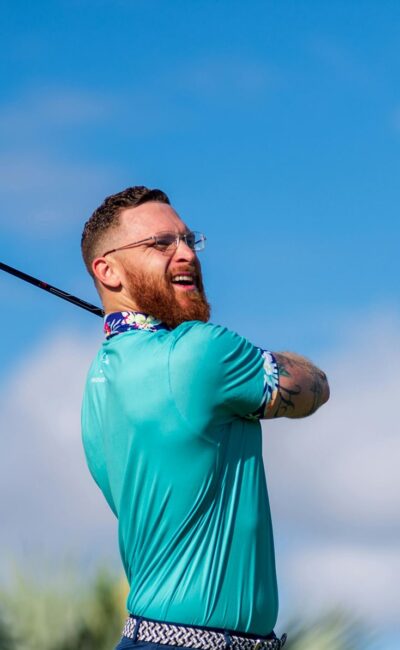Covid-19 brought many industries to a halt in early 2020, especially those in the hospitality sector, such as restaurants, hotels, and entertainment venues, due to stay-at-home orders by the government. However, all small businesses felt and continue to feel the strain of being unable to serve their communities at full capacity or at all.
Those who were able to quickly pivot their business models to an online retail shop were able to stay afloat, while others were unable to keep up with the changing regulations due to the government shutdown business operations endured. Since most local governments are taking their cue from health officials when gauging the likelihood of spread based on community infection and the availability at hospitals to take care of the influx of patients, businesses sit on the border between being open and closed.
Cities and businesses are experiencing different levels of the shutdown, ranging from a halt in operations completely to a limited capacity in stores and spaces. To persevere through these difficult challenges, here are a few ways to prepare for an additional shutdown and reopening after being closed for an extended period of time.
Reliance on Loans and Financing Options
The U.S. Small Business Administration (SBA) offers several options for small business funding, including new resources offered through the CARES Act established specifically for those affected by the pandemic. Through options including the Paycheck Protection Program, EIDL, SBA Express Bridge Loans, and SBA Debt Relief, businesses can seek financial reprieve during a time when their businesses have been hit the hardest.
Depending on your industry and region of the country, there may also be local financial resources available as well from the federal government. The SBA provides a directory with links to local resources on its website. However, with so many businesses relying on financial assistance to carry them through, availability may be hard to come by, and there is the waiting period while applications are approved by the federal government.
In the meantime, many small businesses have pivoted business models as best as possible to maintain a steady stream of income. Many are even implementing cost savings ideas for companies in order to stay afloat. The increase of online shopping and local delivery has helped keep many businesses afloat. Restaurants have changed their model to temporarily include outdoor dining, meal packages, and alcohol to-go as a way to meet their customers’ needs and keep their businesses running. Gyms have pushed their classes and equipment outdoors to retain memberships and retail shops have heavily relied on their online sales to sustain revenue, despite the reduced capacity allowed for in-store shopping.
Nearly every industry and business owner has had to rely on financial assistance and/or adapt to the changing environment with regards to their operations, in order to do business without in-person contact with others. However, constant shutdowns, in various capacities, have sadly led to lay-offs, reduced service offerings, delayed shipments and accommodations for customers, and a decline in business overall.
Feeling the Effects on the Loss of Economic Growth
One of the greatest challenges that have come with the shutdown is pivoting real-time while estimating how to generate revenue once businesses reopen again. Since the future is uncertain as when businesses will begin to operate as normal and what that normal may look like, it puts businesses in another state of flux, in addition to being temporarily inoperable at their full capacity.
A few things businesses have had to consider in the wake of the back-and-forth government shutdown business owners are facing include switching to an online model, adjusting operating hours, working with a lean staff, and maintaining communication with clients and customers in order to improve their cash flow. Each of these areas require constant monitoring, maintenance, and evaluation of whether changes and investments are worth it for the long run.
Since it’s not expected to have a vaccine fully distributed until mid-June 2021 for the coronavirus epidemic and not an immediate timeline of when businesses will resume uninterrupted, businesses have to adjust to what operations look like in the present moment.
Switching to an Online Model
Businesses that were able to do so shifted the majority of their efforts to running their online business, whether through delivery, updating services and products on their website, or offering contactless pick-up from their stores and restaurants. While many small businesses may have already had an online presence, facing shipping delays, working with third-party delivery companies, and answering customer inquiries efficiently have all posed additional problems to the temporary solution during the coronavirus pandemic.
Adjusting Operating Hours
Recent government shutdown business mandates allow retail shops to operate at a limited capacity, which means there’s not as much in-person shopping that requires a fully-staffed store. By changing roles to include job responsibilities such as monitoring online orders and ensuring stocking and shipment have been fulfilled is one way employers can maintain their staff. However, many have had to cut back on their operational hours to restock, reset, and limit how many employees they need at a time.
Working with a Lean Staff
Reducing operational hours and staff helps to maintain the ongoing productivity at a lesser cost, but there are downsides as well. Working with a lean staff means each person must take on more responsibility and too many hours changes the classification of an employee.
Additionally, having a lean staff may not be a choice but rather an effect of employees falling ill or being exposed to Covid-19 and having to quarantine to protect others. It limits small businesses ability or trust in new hires during a shutdown since there’s no guarantee of how many hours will be available and it takes time to onboard a new person effectively.
Maintaining Communication with Customers
On top of what businesses have been dealing with internally among their employees, handling their customer service is another ongoing task that requires ability to pivot quickly and respond to customers as best as possible, when sometimes there’s no clear direction on how to operate.
Many small businesses have increased their social media presence to share recent updates regarding business hours, new products or services, or ways the community can support workers during the shutdown. It’s also a way to answer general customer service questions regarding shipping delays, unexpected closures due to government mandates, and requirements for those visiting in-person.
If an additional shutdown goes into effect, knowing how to operate online with a lean staff and manage communication with your customers is crucial and requires constant attention, in addition to the work it takes to gear up for a possible reopening.
Providing a Safe Environment for the Future
Even as the world has shifted to remote working, there are still millions of workers who are unable to perform their jobs from home. Essential workers in the healthcare industry and other areas of infrastructure, in addition to small business, all must follow protocols to help mitigate the spread of Covid-19. Whether your business is currently open to the public or is preparing to once the shutdown has been suspended, keeping your employees and customers safe is the number one priority.
Clear and Constant Communication
This starts with clear directives and communication with signage and reminders for how staff should handle enforcing rules as people enter their shops or places of business. This starts with basics like requiring a mask covering before entering a space and limiting the number of people allowed inside at a given period. It also includes attaching ground markers that promote maintaining a six-foot distance between each other and creating more space to accommodate ongoing physical distancing to ensure consumer confidence.
Providing Contact-Free Alternatives
It also calls for ways to temporarily move things online as much as possible when reopening after the shutdown order. For example, many in the medical field switched to telehealth and submission of online forms versus in-person visits and contact points. Hotels can improve their sanitary practices by ditching the complimentary water urn by switching to a touchless lobby water dispenser to provide refreshing hydration to their guests. Restaurants have spaced out their seating and created outdoor spaces to adhere to the rules of their county or switched to pickup or online delivery only to limit contact. Offices have begun to offer contact-free amenities, such as FloWater’s refill station that provides purified water on-demand.
Each industry has had to shift how they normally perform business to both accommodate health guidances and client expectations to meet the demand necessary in the safest way possible.
Using Technology to Keep Connected
Many small businesses have also had to fully embrace technology both for operations and marketing to keep customers informed and adapt to online buying. This has also included creating video conferencing substitutions for live events as a way to promote engagement and keep clientele onboard through the ups and downs of the shutdown order.
This was a largely felt shift for gyms who have teetered between a full shutdown and limited capacity inside its doors. Online and outdoor classes have helped maintain memberships, but without the same amenities and experience as someone who is visiting the gym to workout with a full suite of equipment.
Preparing for What’s Next
From the get-go, small businesses must learn how to be agile in a changing economy and ebbs and flows in consumer demands. This foundation was tested in 2020 with challenges no one could’ve predicted. However, building a strong client base is one of the best ways they’re able to survive financial hits and temporary closures. Small businesses have worked tirelessly to adjust the day-to-day during the shutdown and prepare for reopening however that may look like. Retail stores across the country have been implementing an instore service water dispenser to provide customers with clean and refreshing water.
Sources:
https://www.sba.gov/funding-programs/loans/coronavirus-relief-options




